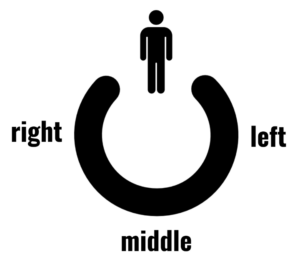
Being a trainer and doing the sessions means that you are in a way a public speaker. You stand in front of people and talk about something – a mere definition of public speaking. As the trainers are experts in the field of the sessions they are doing, it should be easier to speak in front of everyone?
Well, one thing is to be able to speak in front of everyone and completely another level do to it with confidence and leaving a great impression. As I am passionate about public speaking and had the opportunity to practice it through numerous local and international conferences, including giving a TEDx speech, I am giving you 5 proven strategies that are going to improve your public speaking skills.
#1 – Know when to make a break
When speaking in front of an audience, it is important to help them understand, absorb and process what you are saying. This way, you will not only be sure they got the point but also will develop a connection with them.
This is why the golden rule, the number one strategy is to make a short break after the sentence, phrase, or word you want to put emphasis on. This break is short and is giving your audience the time they need to process it.
Exercise: Write down 3 sentences on a piece of paper regarding what you were doing yesterday. Turn on the voice recorder on your smartphone and first, read them with a flat tone, no breaks, as you are a bad narrator. In the second round, read them in a way that after the word or phrase you consider important, make a short break and move on.
Reflect: Listen to both voice recordings and reflect on the differences. What kind of feeling do you have in the first recording with no breaks in comparison to the second one? What is different in the second one? How do you perceive information from the first one in comparison to the second one?
#2 – Eye contact
It’s a training course, and you have somewhere between 20 and 25 people in the seminar room. They sit in the circle and you go to the front and start speaking. Where do you look?
Do you constantly look around so you look like you’re in a tennis match? Do you look to the floor because you don’t know where to look? Did you fall down into a trap of that one person who is nodding their head so you always look at them because you think they are the only one listening to you?
All of these are real-life examples I have witnessed when delivering workshops or observing other people doing so. With years and tons of practice, I learned how to master eye contact.
What I usually do is divide the circle into three sectors: left, middle and right. You can see how it looks on the graphic below.

What I usually do is scan the sectors while speaking. So I am going to start the sentence by looking at the range of people on the left, in the middle of the sentence I am going to transfer to the range of people to the right and finish the sentence by looking at someone in the middle.
It is completely up to you which dynamic to choose, and where to look first but keep in mind that by doing this, you cover all sides, sometimes you look directly at one person and this can sometimes be someone who is fully interested in what you are saying (tilted a bit forward, nodding head, eyes focused) or to someone who is not so interested (often looking around, leaned backward, closed body language) in order to try to activate them.
It is important to avoid the trap of always looking to the people who are interested and nodding or showing interest but to focus on the range of people from a specific side. It means you are not looking to someone specifically but you are looking in their direction.
#3 – What to do with your hands?
Often we are confused about where to put our hands so it goes to extremes, either they are near the pockets or they look like you are trying to kill 150 mosquitos. We need to find the balance and be aware of our body language that fits into non verbal aspect of communication.
Your hands should follow what you are saying and express it – simple to say, hard to do.
In the image below you can see a good example of various hand expressions.

Source: https://d73toastmasters.org/use-the-hand-gesture-dictionary/
Exercise: record yourself speaking for one minute about your favorite meal. Try to include hand expressions so they follow what you are saying. Mute the video so there is no sound, give it to someone you know and ask them, by looking at the hand gestures, how they feel, which kind of impression they have, and as a bonus round, what could your speech be about? Enjoy this experience and let me know what have you discovered.
Final words
All of these are nice and sweet theories. It might get you inspired, it might make you feel good but without practice, you just wasted time reading this article. So get into practice right away because that is the only way to improve your public speaking because in this field, it is 90% of doing and 10% of learning about theory.
You did your 10% by reading this article, congratulations, now get to work! 🙂
